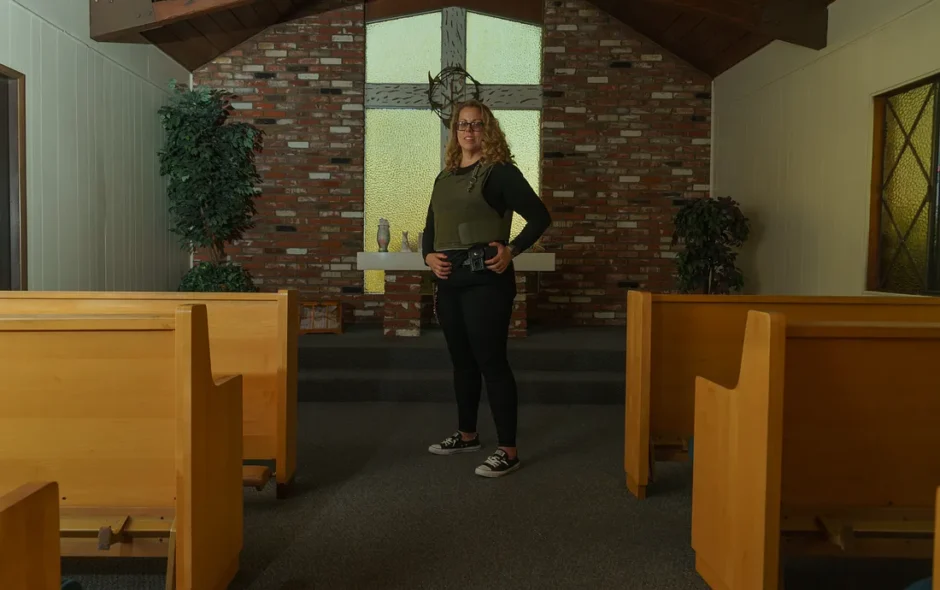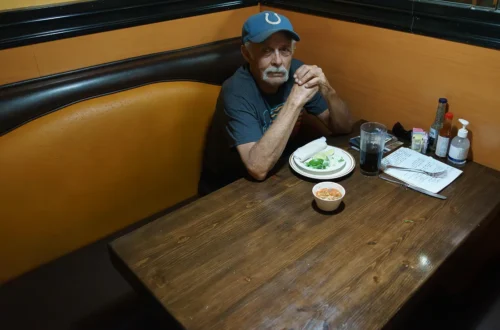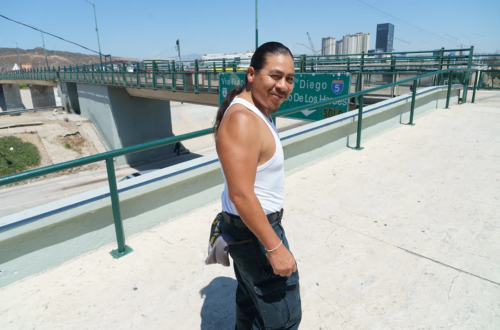Gladiator School: Stories from Inside YTS (Episode 17)
Edited and photographed by David William Reeve
Editor’s note: This is Part 17 of “Gladiator School: Stories from Inside YTS” — an oral history of life inside California’s most notorious juvenile prison. Youth Training School (known formally as Heman G. Stark Youth Correctional Facility) had a reputation for mayhem, violence and murder that earned it the name Gladiator School. It closed in 2010. Juveniles were hardened for survival at YTS, only to be returned to the streets.
Since publishing the story The Closing of California’s Most Violent Juvenile Prison, survivors of YTS have come forward to tell stories of daily life inside. This series relays and respects their stories: Juvie told by those who were there.
In this episode, a young staff psychologist arrives in 2009 with a university degree and ambition for her first job. But the wards on I & J unit only see fresh meat, as Dr. Ashley Massimino armours her mind and body to absorb horrific confessions from the darkest corner of YTS, the Sexual Behavior Treatment Program.
Focus on their trauma
There was something that started at YTS that just carried throughout my career. There’s a process of getting mentally and physically prepared to go to work every day. It usually occurred at the trunk of my car. I don’t like to drive in wearing all my equipment. It’s uncomfortable if you have to commute. Often, I would get to work, pop the trunk, and put on everything that I needed.
For me, it was all black clothing. I’m completely covered. It doesn’t matter if it’s 110 degrees out — long sleeves, high necks, long pants. There’s a duty belt, and there are different things that we would wear on the belt. There’s a vest that I’d wear that’s stab resistant. Sometimes, I’d put it over or under my clothes, depending on what I wear. I’d always wear shoes that I could run and kick in. Earlier in my career, it was Vans and Converse.
The same thing would occur after work: shedding the armor, putting the equipment back into the trunk, and then driving home.
I’m not allowed to carry a weapon. I’m completely dependent on the correctional officers around me for support. But you learn over the years to use nonconventional tactics. There’s always a good three-hole punch lying around or a good stapler if you need it.
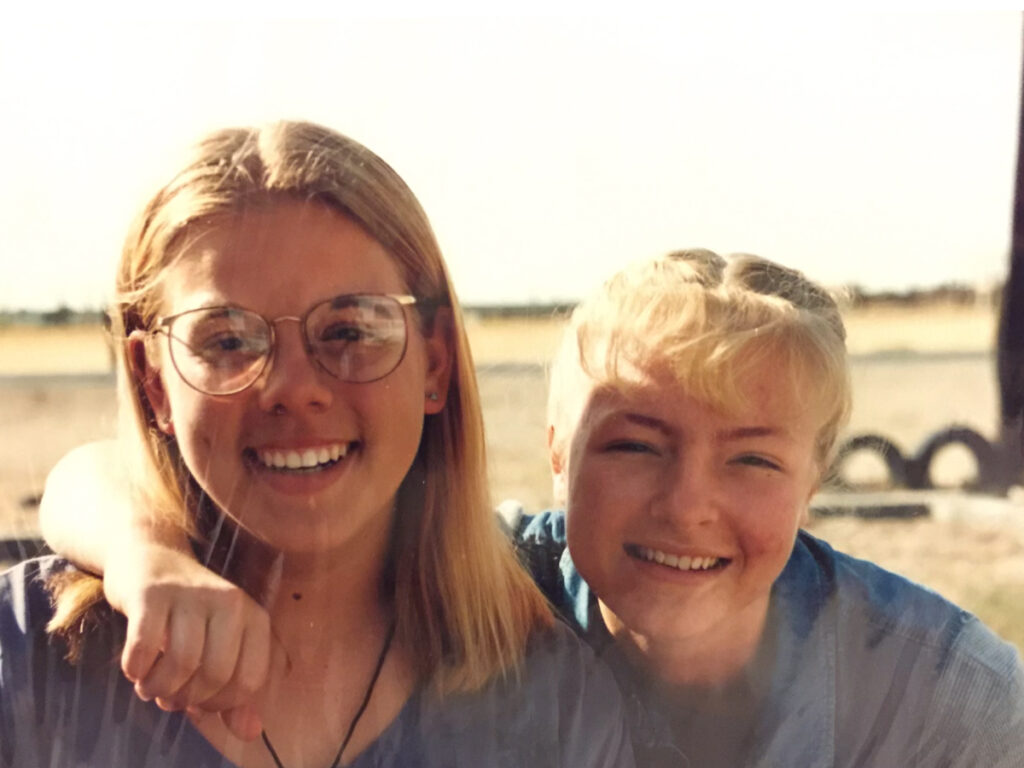
I went to school at Biola University’s Rosemead School of Psychology in La Mirada, California. There’s an understanding that Biola is a very traditional Biblical evangelical school. They don’t want people coming here who are lukewarm in their faith. They want you to sign a behavioral contract and share your testimony with them before getting admitted. They want to know that you’re a Christian and that you want biblical training on top of whatever else you’re coming here for.
Rosemead is known for being a very solid, APA-Accredited psychology graduate school. The combination of those two things lets people know that when you graduate from this school, you’re getting a quality psychologist. You’re getting someone that has depth and breadth to their training.
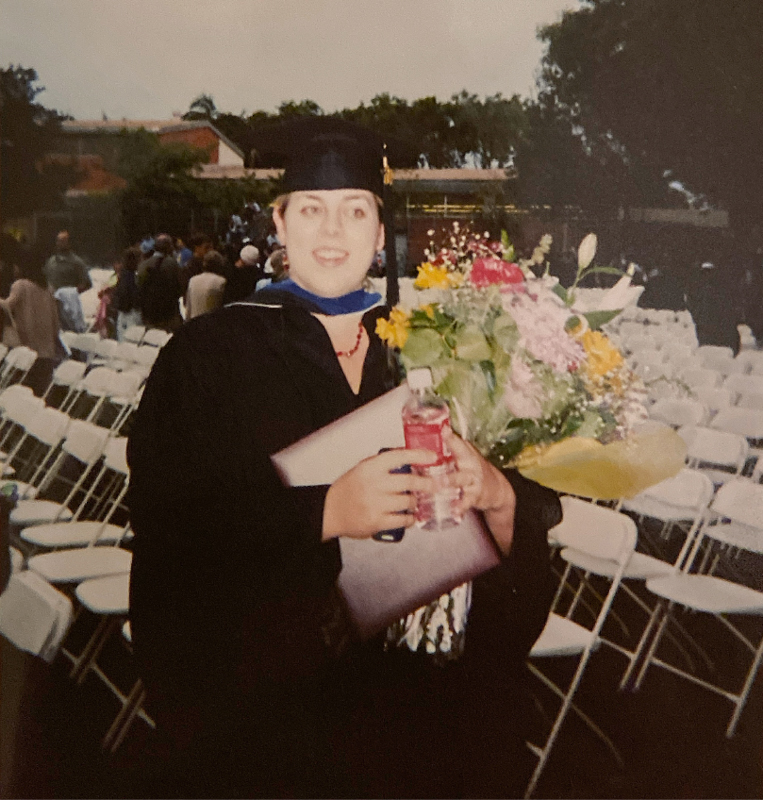
Before graduating in 2008, I worked for an entire year with the Orange County Child Abuse Unit at Orangewood Children’s Home. After graduation, my first interview was at the California Institution for Men in Chino, which is part of the California Department of Corrections and Rehabilitation.
There were six people on the interview panel. If you know anything about state interviews, there’s protocol, and you don’t deviate. They don’t ask anything else except the questions that are on the sheet in front of them. I’m fresh out of grad school, and they broke protocol immediately.
Dr. Randall Norris, the Chief of Mental Health at the time, broke protocol, saying, “Dr. Massimino, we’ve had people here that have gone to your school, and they haven’t done well here.”
Immediately, I’m being told I’m not going to get this job.
“Why haven’t they done well?” I asked him.
“Because their ethical standards are too high, and they can’t tolerate some of the things they see here.”
I didn’t know how to respond to that, being so new and not being familiar with prison.
I was unemployed for an entire year post-graduation. I learned a lesson in humility — that I was not entitled to a job just because I had a degree or training or because I went to Biola. I had to fight for each interview. Finally, I interviewed at Youth Training School (then called Heman G. Stark) in March of 2009.
There were two positions open, and 20 people were interviewing. I saw who had signed in and who was interviewing, and most of the people were licensed. I was unlicensed. I thought, I’m not going to get this job.
I had done a lot of preparation for the interview. I went in, and I interviewed well. They asked me about working with sex offenders. I talked about my dissertation, which was about understanding the tools we had available at that time for assessing risk with juvenile sex offenders.
Every couple of months, one of the interviewers would call me and tell me that they weren’t sure if Stark would close down. They weren’t sure if they could offer me a position, but they said they would like to hire me and that I was one of the two people selected.
Six months past the interview and 12 months after graduating, I finally started my first job at Heman G. Stark Youth Correctional Facility.




I knew it was not going to be like a juvenile hall, a group home, or even a state hospital. I was going into a maximum-security correctional facility. It was serious there. I remember I had done a little research and had read about a youth counselor named Ineasie Baker, who had been murdered there. I remember seeing signs everywhere that said, safety first.
I went in dressed professionally, I thought.
I carried a backpack, which seemed like a reasonable thing to carry. I had worked places before where if something happens, you might have to drop everything you’re holding, including a coffee cup, a clipboard, pens, or whatever.
I was 29 years old, wearing sneakers and a backpack. I’m sure I looked like I was 15. Most of the wards on my unit were 25. I was only four years older than most of them.
I don’t recall my first day, but remember being given alarms. They had a pretty sophisticated alarm system.
I had a duty belt that I wore. I’d slide on these alarm cases that held what looked like old-school garage door openers. There was one alarm assigned to me, and if it went off, someone somewhere knew whose alarm it was, and they could pinpoint my location and respond accordingly.
The second alarm was about the size of a radio or a walkie-talkie. This alarm, if it was turned horizontally, would go off. If I got knocked down, it would go off. I had to be careful when going to the bathroom; I could not allow it to go more than 45 degrees, or else it would go off. It’s not something I could take on or off the belt, really.
I was given a huge ring of Folger Adam keys to wear on my belt. These were very heavy keys. I had already learned that securing keys on your person is one of the most important things. If keys get lost, no one is going home until the keys are found.
I had three psychologists in my unit who were all older and very well-trained. They took me under their wing. I got to shadow them for three months. I didn’t do any work on my own. I watched them run groups, do individual treatment, and sat in on treatment team meetings. That was probably the most foundational training I’ve received anywhere, getting to watch these psychologists do their work with sex offenders.
We had one ward on unit I & J, who was 37. He was the oldest ward in the state. The older psychologists were very protective of me being there, and I was told not to interact with him.

Wards are supposed to be released at age 25 unless they have adult time to serve. The way the law worked, they could hold you every two years, post your commitment time. Because they deemed him a risk to society, they would continue to deny his release every two years. He wasn’t eligible to go to an adult prison because he was committed as a ward. It was unusual to have someone like him on the unit.
I learned a style of group training based off the teachings of Irving Yalom that became popular in the 1970’s, which was more process-oriented. But what I saw at YTS was more of a trauma-based cognitive behavioral therapy approach, and each group lasted three hours long. Six to eight wards would attend each session. We separated the child molesters from the rapists. They were considered two different treatment groups.
There was a curriculum we used in each group. It was obvious from the way the state had structured the groups that there was a purpose for what we were doing, and the purpose was to go to the parole board.
We were not only trying to rehabilitate and correct some of the things that had gone askew, but we were also preparing them to go before the parole board and talk about what they had done.
It was an interesting mix of taking accountability, developing insight, expressing remorse authentically, and really understanding the connection between their own trauma and what they had done to someone else.
Each ward on the unit had multiple victims, with crimes committed over long periods of time, and often with multiple charges.
Every time we started a group session, we would start it the same way. Sitting in a circle, each ward would say his name and introduce himself by what he had done to his victims.


They would say what they were charged with: I was charged with a 288, lewd and lascivious, five counts. We would ask them to state what it was they did to their victims. We were teaching them to use language that was appropriate. We wouldn’t use sexual slang like “giving head” because giving head is consensual, and it’s considered slang. We would teach them terms such as “forced oral copulation.” Then, we would teach them how to say, this is what I did to this victim, and I did it this many times.
I was observing outside the circle. They knew I was there, not participating. There was a lot of boundary-testing going on outside a group, like, she’s fresh meat, so we’re going to see where her lines are.
They would want to meet me. They might want to shake my hand. They’d put their hand out and say, Hi, I’m so-and-so. What’s your name?
I would not shake their hand and then explain why I’m not shaking it. I would introduce myself as Dr. Massimino and say that I’m a new psychologist on the unit. “It’s nice to meet you.”
They would see my ID or know my first name somehow.
Can I just call you Ashley? That’d be more comfortable for me. I’d feel like we had a closer connection that way.
I would say, “No, that’s not okay. I need you to call me Dr. Massimino.” This would go on frequently.
Not only are these wards being kept away from any sexual stimuli, but we’re talking about a lot of sexual things. I realized how I presented myself had to change.
My hair would never be curled going to work. I would make sure my shirt would be to the neck. My clothing became very gender-neutral. Usually, the heat or the air conditioning didn’t work in those buildings; it was always freezing. We’d have to wear coats and beanies inside the units. My presentation could not be distracting for the wards because it would just derail all the treatment we were doing. I just had to be a psychologist; I had to eliminate anything about me that stood out, or that looked feminine.
We separated the child molesters and the rapists for a few reasons. The rapists would attack the child molesters, and rapists could not tolerate hearing about child molestation. That hierarchy in prison exists between the two of them, where inmates or wards view rape differently than child molestation.
The other reason we separated those groups is that they require very different types of treatment. Most rapists tend to have anger management issues, and tend to recidivate non-sexually, so they tend to be arrested for battery, assault, or even murder. They tend to act out with aggression, and the rape typically is just another form of aggression. Both groups had significant sexual trauma, but the child molesters tended to have more sexual trauma than the rapists did.
Another reason we separated the two groups was related to sexual arousal patterns. When you think about someone who is attracted to a child, that’s a very specific type of arousal. A normal or non-deviant person is typically attracted to someone of a similar age. For a person to have an arousal pattern toward someone that’s not their age and so much younger, is considered a deviance. Child molesters or pedophiles have specific arousal patterns and arousal types. Professionals who treat sex offenders know that pedophilia can’t be fixed. We can try to limit it. We can try to help them understand it and curb it, but we really can’t fix it, and it can’t change.
In treatment, we can’t fix arousal patterns.
I started taking on some groups myself, and I started seeing some wards one-on-one for therapy. I remember just holding everything in. Initially, it was a shock to hear so much sexual content and to hear about children being sexually victimized. I remember holding everything in while at work, and then I would get to my car every afternoon around 4:30 or 5:00, and I would just break down in tears, and I would cry the whole way home.
I remember just asking God, “God, help me with this. I don’t know how to do this.” I didn’t know how to handle what I was hearing and still treat these wards. I had to hold a therapeutic space for this person. I had to be non-judgmental. I can’t hate them. I can’t despise them. I can’t be angry at them. I don’t have to like them, but I have to hold this space for them.
I was hearing about all the things that were done to them and then hearing about all the things they’ve done to children, and my mind would spin. I started ruminating about this outside of work. I’d have images in my mind. I’d read police reports to corroborate what they were sharing in group, and I was dreaming about it.
Near the dayroom, there’s a small group room. It had a solid door with a square glass pane in it. We were sitting in that little room having a treatment team meeting, and out of nowhere, someone launched a chair against the door, and the glass just sprayed all over our faces in the treatment room. Just out of nowhere, no warning.

The state announced that they were going to close YTS.
The state decided to disperse whatever wards were at Stark to other juvenile institutions. My unit was moved to the Southern Youth Correctional Reception Center and Clinic in Norwalk. I was asked to either stay here at Stark in an empty unit for three months or to move with my unit to SYC-RCC and continue treatment until the closure date, March 1st, 2010. I wanted to keep learning and stay engaged, so I went to SYC-RCC.
Everyone at YTS spoke very highly of me. My performance evaluations were positive. They asked me to write up a case conceptualization for one ward on the unit just to see how I would write it. They knew the kind of school that I went to, and they were very impressed. I didn’t have any confidence issues.
In retrospect, I don’t understand what Dr. Norris was even talking about when he meant I wouldn’t work well at the California Institution for Men. Throughout my tenure with the state, I worked at a total of five adult prisons, eventually working at the California Institution for Men, and it was the best prison I’ve ever worked at. Ironically, it was my most positive experience in an adult prison.
The rehabilitation training manuals were well done and focused on narrative therapy. The first assignment in the treatment manual was for the ward to write out their entire autobiography. It was a way of helping them capture important times in their life in a narrative fashion and focus on their trauma.
Then we would transition into talking about their crimes and how they replayed their trauma with their victims. There was a really beautiful diagram that someone developed to capture this model. It was a way of helping the wards memorize and be able to articulate to the parole board how their trauma has impacted their criminal history.
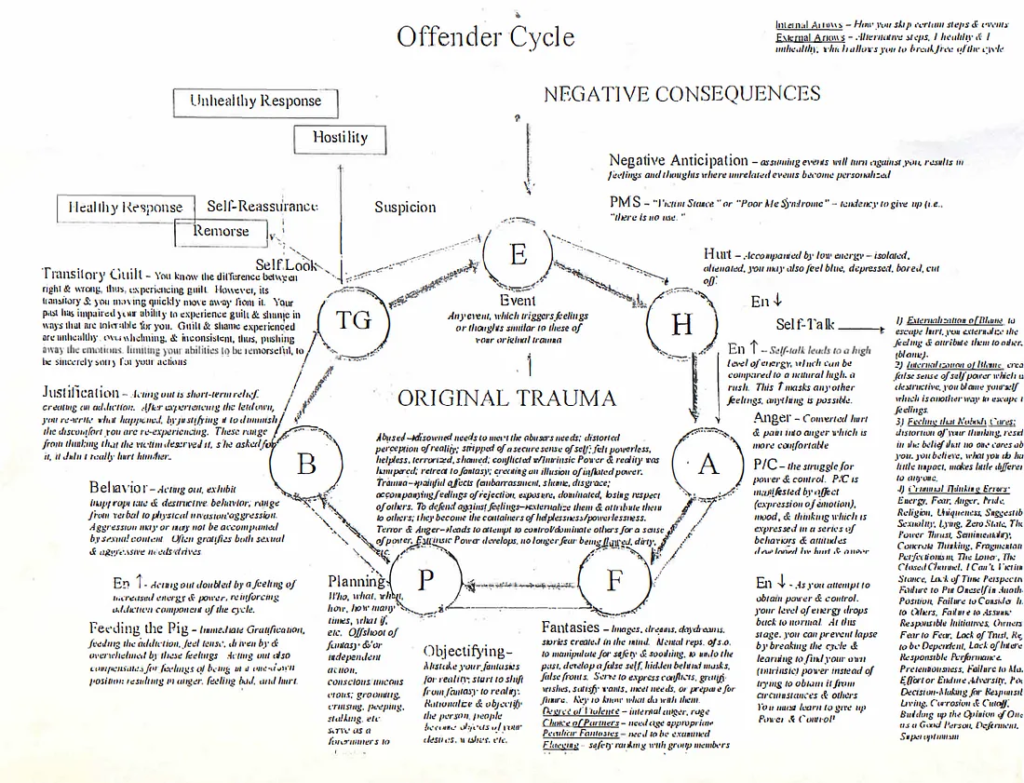
The diagram starts with identifying the ward’s trauma, identifying their triggers, and understanding how the ward might be acting out negative behavior. Acting out is considered to be externalizing behavior, which is typically caused by irrational thinking or cognitive distortions. Examples of cognitive distortions include blaming others, adopting the victim role, and having a poor me mentality.
The planning, fantasizing element of the cycle involves thinking about how the ward will take back control. How am I going to retaliate or get revenge? Or, What do I want to do now to take back control? Then there’s a burst. There’s a negative behavior as part of that cycle, and that’s usually their crime. Then there’s superficial remorse that they experience afterward, where they acknowledge, I shouldn’t have done that, but there isn’t a deep understanding of the harm that has been caused.
I was helping the wards interrupt that cycle and helping them learn how to talk through it when triggered. That was something that became very foundational for me, that is not just pertinent to sex offenders, it’s everyone. We all have trauma, and we all get triggered, and then we all have ways of coping with our triggers.
I was asked once to assist another psychologist on a different unit with a problematic ward. This psychologist had a suspicion that this ward was masturbating in session in front of her. She was in her early 40s, an experienced and attractive female. She was afraid to challenge him or say anything. The assessment I was asked to perform was to determine if this ward needed more specialized treatment for sexual issues. He was being inappropriate with her, and he needed to be confronted about it. I needed to meet with him individually, by myself.
At this point in my career, I had never seen anyone masturbate in front of me. I hadn’t been exposed to any of that. It happened a lot more frequently on the adult prison side, but I hadn’t seen that yet, nor did I want to see it. I’m problem-solving ahead of time, like, thinking how do I make sure this doesn’t happen during this interview?
I brought a deck of cards with me, and I knew we were going to sit on a picnic table outside to talk. We sat down, and I asked him to shuffle the cards so that I could see both of his hands.
We’re starting to talk, and I was asking him about his unit and his psychologist, and he knew why I was there.
I asked him, “Did you masturbate in front of her in session? Because she thinks that you did.”
“Yeah. I did it four different times. She never said anything, so I just kept doing it.”
This was the first time he had acknowledged doing it. He didn’t meet the criteria to come to our unit. He just needed to be told to stop.
I then had to go to this unit and teach the psychologist, who was 20 years older than me, how she needed to have boundaries with wards around this topic, to tell them, “Put your hands on the table where I can see them.” It’s that simple.
I learned a lot of things in those six months, like how to maintain boundaries, how to be safe, how to communicate, and how to be direct with what I was saying. Knowing that Counselor Baker had died there served as a platform for me of how I was going to operate when I went to the adult side after that. When I look at myself compared to my colleagues, people think I overreact to things or take things too far with regard to safety. We call it being “correctionally aware.” I expect things to be done a certain way, and I expect them to be done safely because if they’re done that way, it ensures that we all go home safely.
I’ve seen prison staff come in with low-cut shirts and that puts us all at risk. An inmate who sees that will think, Well, maybe she wants me to touch her. Then that inmate will think, Well, maybe I can touch any female staff that walks by. Now I’m not safe, now my staff aren’t safe. It’s a domino effect and it causes staff to be very rigid about how you act, speak to people, and what you wear. It changes you.
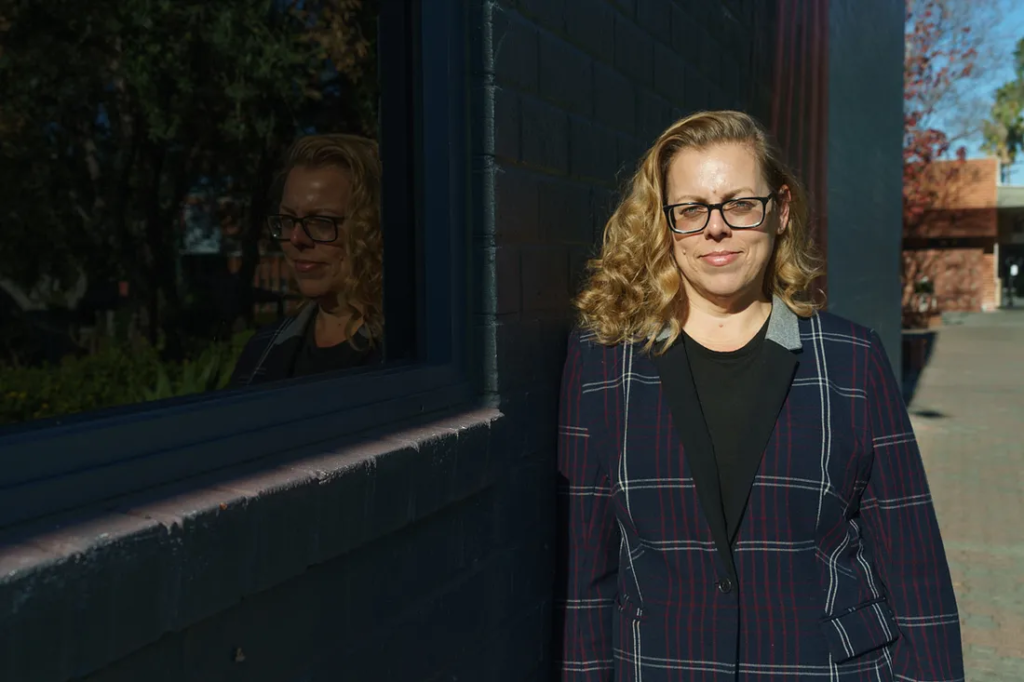
In California, in the ’60s, ’70s, and ’80s, there were a lot of foster homes and institutions run by the Catholic Church. There was a heavy presence of Catholic priests in correctional facilities for youth. Not just YTS, but statewide. I’ve worked for a local law firm and interviewed former wards about the sexual abuse that occurred within those facilities.
Because of the training I received at YTS, I became very comfortable talking with male clients about their sexual trauma. I think I was always curious about human sexuality in general and how certain things become deviant.
It is very difficult for a man to acknowledge that he has been sexually abused or raped by another man. And I think it’s especially hard for an inmate or a ward to admit that they have been sexually abused. It’s something that you would never want to disclose to another inmate, ever, because it’s going to be perceived as a weakness.
Building rapport and trust in prison is very hard. If a ward or inmate is coming in for the first time, I always want to ensure that we’re on the same page and that he understands the rules of the setting we’re in.
For example, there are certain things we have to tell staff if it happens:
- If there’s an escape issue
- If there’s a safety issue
- If there’s a rape issue
- If they have some contraband on them that puts someone else at risk, like a prison-made weapon
Those are things that I will absolutely not ever keep to myself. I let them know upfront, “You and I both know the rules here, and I’m not going to lie for you. Don’t tell me anything I will have to report if you don’t want me to report it.”
Being upfront about the rules and just saying it puts them at ease.
Inmates will try to come in and pretend like they’re slow or not as smart as they actually are, or that they’re mentally ill. They might think, If I just rock back and forth like this as I’m talking, she’s going to think I have some psychosis or I’m talking to myself in my head.
We’ve all been played.
What they don’t know is that I’ve already been out on the yard and seen them interacting with their peers, and I know that they’re not rocking out on the yard. They’ve gotten me before. Everyone gets played eventually. But you learn from it, try to move on, and not let it happen again.

The first time I walked onto an adult prison yard was in Lancaster, and I recall just how big these men seemed compared to the young adults at YTS. I was petrified. I had my first prison nightmare that night. I remember an inmate who began rapping a popular song in my direction: It was Tupac’s “How do you want it?” His rendition was impressive, though incredibly inappropriate.
The turning point in my career came when I was running a lifers group at the Lancaster prison, and I became aware of two correctional officers who were harassing the inmates who were coming to my group. The inmates would be livid. They would be angry for the entire group session. We couldn’t even get to the group content because they were so angry about what had happened with these two officers. They were interfering with my group.
I started spending time with these two officers, thinking I needed to build rapport and figure out why they were interfering. I never brought it up with the officers; I just started getting to know them. It became very apparent that they needed help themselves.
One of the officers was actively suicidal and confided that he had attempted the night before we talked, putting his gun to his head. This was the moment my focus began to shift to include working with first responders.


Currently, I work a lot with veterans, military, police officers, and firefighters who are really struggling with PTSD, trauma, and the stress of work. They’re doing a lot of drinking, and don’t often know how to access good care.
These people have very hard jobs. I’ve been with them at work. I know how hard it is, and they deserve good care, too. They carry a lot of trauma as well as sexual trauma I’ve discovered. Sometimes I’ll have a new private practice client who will say they’re coming in for relationship issues with their wife or to address their drinking. Lo and behold, they share a sexual trauma with me that happened when they were a child. Then, it all circles back to YTS and my training.
Today, I’m in full-time private practice. I see clients for hourly sessions, sometimes twice a week, sometimes once a week. They generally use their insurance to see me, but I do market myself so that first responders know that I am someone who wants to see them. Unfortunately, there are a lot of negative perceptions right now about law enforcement. Most police officers are reluctant to go to therapy.
My early training at YTS did prepare me to hear hard shit. To work with first responders, you have to also be willing to hear some really difficult content.
Being a psychologist does impact the quality of my personal relationships. It’s common for my relationships to become one-sided, and I have learned over time to have better boundaries and to be selective about who I become close to.
There are suicide attempts and overdoses in prison. If you look at the numbers, it would seem like the statistics are higher in prison, but they’re actually lower than the general population. Prison staff are more at risk for committing suicide than inmates.
In one year in the Lancaster prison, four correctional officers took their own lives.
I did have a client, who was an inmate, who did take his own life. I wasn’t treating him at the time; he transferred to another prison and was no longer under my care. His death had a profound impact on me.
These are our clients still, even if they’re inmates. Some prison staff may pretend inmates are not human, and act like they are not affected by the suicide attempts, overdoses, and other forms of carnage that goes on in that setting. However, the reality is everyone exposed to these acts are impacted when it happens. It was incredibly painful for me. Most prison staff are struggling to deal with the death and trauma they are exposed to at work, and often times this comes across as indifference.
One in two psychologists will have a client take their own life over their career. I’m already at one, 15 years in.

Dr. Ashley Massimino is a Clinical and Forensic Psychologist. She works in clinical practice utilizing Eye Movement Desensitization and Reprocessing (EMDR) and Accelerated Resolution Therapy (ART), specializing in the treatment of trauma and PTSD, with a particular emphasis on sexual trauma. Her clinical practice also includes the provision of group therapy as well as advanced peer support training to small groups in law enforcement, first responders, and healthcare agencies. She has spent a large portion of her career providing treatment to men in the California Department of Corrections and Rehabilitation, including at Mule Creek State Prison, California Rehabilitation Center, California Institution for Men, Wasco State Prison, and California State Prison Los Angeles County. Her first job out of Biola University was six months at Heman G. Stark Youth Correctional Facility, also known as Youth Training School.
David William Reeve is an independent writer and photographer who documents the lives of juveniles at risk. Visit davidreeve.net for more.
Contact: davidwilliamreeve (at) gmail (dot) com

